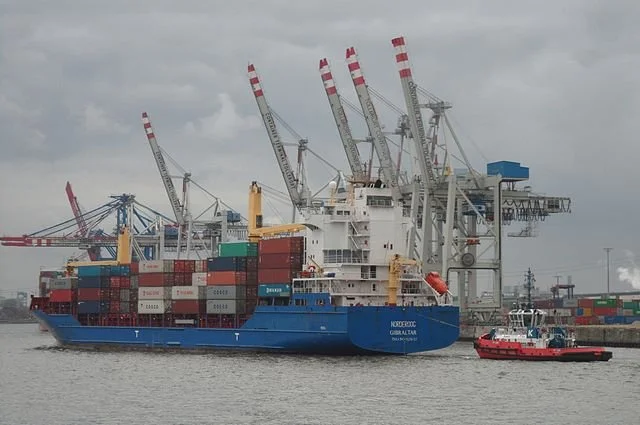Chain of Events: The International Ramifications of the Supply Chain Dilemma
Shipping delays, product shortages, demand outweighing supply: an underestimated consequence of the Coronavirus pandemic, the global supply chain issue is wreaking havoc in today’s highly globalized world. A supply chain comprises the intricate step-by-step process of making and selling a product that often crosses a plethora of international borders before reaching the customer. Virtually every sector has been affected, and the trickle-down effect of the supply chain dilemma in tandem with the easing and tightening of international restrictions reveals the complexities of fluctuating, interconnected global trade.
The initial shutdown of states and states’ manufacturing and production plants at the dawn of the Coronavirus pandemic in March 2020 was the catalyst to global supply chain disruption. However, it should be noted that stress in the supply chain was evident pre-pandemic, with one of the most noteworthy examples being when former United States President Donald Trump escalated general trade tensions between the US and China in 2018 by imposing tariffs and sanctions on Chinese companies, thus prompting international anxieties. By the summer of 2020, manufacturing had slowly resumed and global trade had returned. By the end of the year, however, the realities of restarting the global economy after lockdowns were visible: shortages of shipping containers and the people who operate them, steep transportation prices, and congestion at international and domestic ports proved disastrous. 2021 battled high inflation and critical shortages of medical supplies as a result of the global dilemma.
Economist David Lynch responds frankly to the supply chain dilemma, articulating that they cannot determine when the issues will subside, nor can they determine the full effects of the pandemic upon the dilemma. Amidst the uncertainty, suggested solutions are proposed as a way of combating the current unreliability of imports and exports. These solutions include Near-Shoring: manufacturing their operations closer to the retailer’s origin; Reshoring: directing manufacturing operations to the country of origin; and China + 1: trading with other countries alongside China to ensure access to the Chinese manufacturing market, though not dependent on it. The advised solutions have merit to their approaches, but a closer look at their initiatives is beneficial:
Near-Shoring
By manufacturing products closer to home, transport costs are slashed and delivery times are cut, thus resulting in a higher profit margin and higher customer satisfaction. Economically, the benefits of nearshoring pay off. Politically, nearshoring can bestow states the agency to consolidate political ties with neighboring countries by establishing manufacturing and production operations with each other. While states may capitalize upon this opportunity to cherry-pick which states they want to do business with, they may also realize which states they want to avoid: For example, the rising tensions between Russia and Ukraine have deterred foreign nations from doing business with them, as the geopolitical threat present in the region could lead to product unavailability for the wider world and disrupt production and manufacturing.
Reshoring
Examining Reshoring, the ethos of the approach aims to alleviate dependency on the global supply chain through reissuing production plants into domestic borders to reinstate the agency of a state. This nationalistic approach reduces uncertainty by mitigating transportation and manufacturing costs and potential delays. Additionally, this may mend some of the economic strife resulting from the pandemic through the creation of new jobs at these domestic plants. In the US, tech giant Intel announced that it plans to build a semiconductor factory in the state of Ohio and expects to create 3,000 jobs from the mission. This prime demonstration illustrates how this adaptive measure to the global supply chain dilemma may prove to be beneficial if the pandemic continues to prevail, as the company would not be subjected to halted trade resulting from the fluctuation of international borders.
China + 1
The impact of the pandemic has illuminated the US-China monopolization on the world economy and has inspired countries to diversify their economic opportunities outside of the hegemons. While it may be unrealistic to completely disregard trade with China, a multilateral approach such as the China + 1 strategy grows in appeal. For example, the United Kingdom seeks to pursue Japan-led Comprehensive and Progressive Agreement for Trans-Pacific Partnership (CPTPP) Indo-Pacific relations, and Germany approved national legislation encouraging engagement in the same region. Enabling newfound alliances may not have been pursued if the ramifications of the global supply chain triggered by the pandemic were not so severe. The ambitions of states to shift and expand their trading relations away from China to a middle ground showcases the complexity of the global supply chain to all actors involved.
Living in a time where global relations are delicate and rhetoric regarding the potential for a new world order is discussed, the supply chain dilemma highlights the intricacy of today’s shifting world. A chain is only as strong as its weakest link, and as the global supply chain has demonstrated, the international reverberations borne from pandemic-induced challenges have cultivated economic and political anxieties. Whilst the issue is pressing, a silver lining detected in the supply chain dilemma manifests itself as an opportunity to facilitate global and political ties with states close to home and afar for political and economic gain. \
Image courtesy of Buonasera via WikiCommons, ©2013, some rights reserved.
The views and opinions expressed in this article are those of the author and do not necessarily reflect those of the wider St. Andrews Foreign Affairs Review team.



